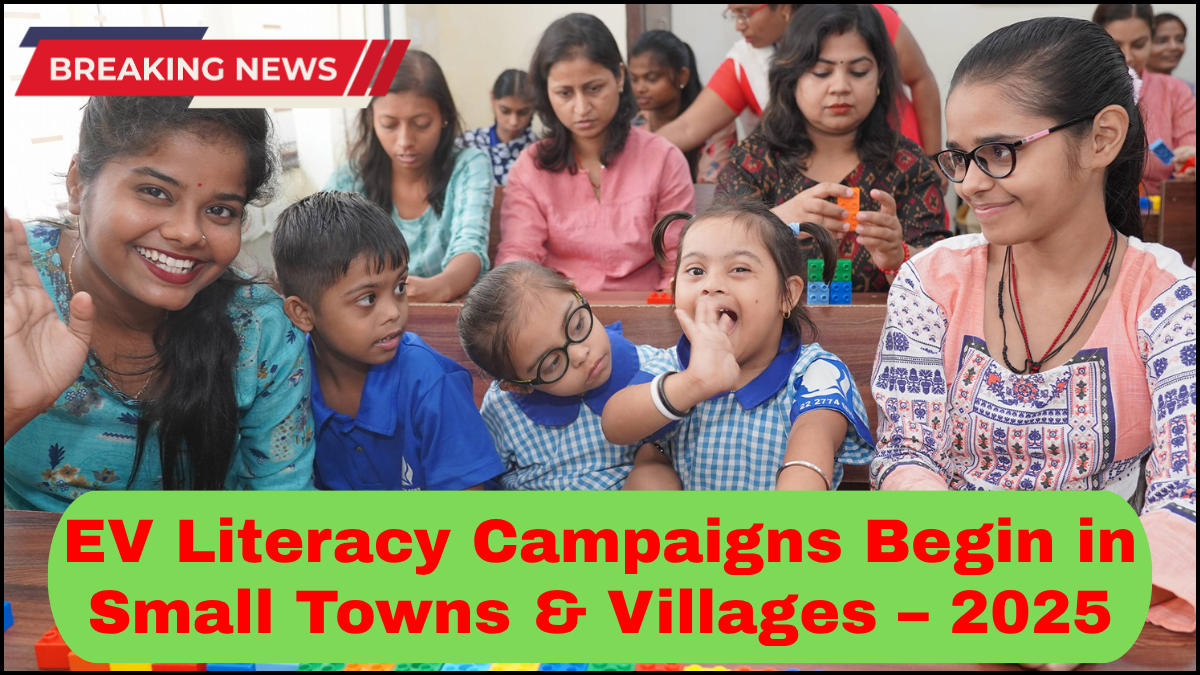As India and other emerging nations push toward a cleaner, electric-powered future, EV literacy in small towns and rural areas is finally taking center stage. The year 2025 marks a significant shift—electric vehicle (EV) awareness campaigns are no longer confined to metro cities. Governments, NGOs, and private players have begun targeting smaller towns and villages to bridge the knowledge gap and build trust around EV adoption.

Why Small Towns Matter in the EV Transition
While cities have long dominated the EV conversation, small towns and rural markets represent untapped potential. These regions account for a significant share of India’s two-wheeler and three-wheeler users. Yet until recently, most residents lacked access to clear, actionable information about electric vehicles—how they work, the benefits, or where to charge them.
The current phase of growth recognizes that for EV adoption to be truly inclusive and impactful, EV literacy in small towns must be prioritized. These areas are often more dependent on affordable mobility and are therefore ideal candidates for cost-effective electric alternatives.
What EV Literacy Campaigns Look Like in 2025
In 2025, awareness drives have evolved into multi-pronged efforts that combine education, infrastructure exposure, and hands-on experience. Here’s what the on-ground implementation looks like:
1. Mobile EV Demonstration Units
Customized vans equipped with different types of electric vehicles (e-bikes, e-rickshaws, electric tractors) travel through clusters of villages, offering free test rides. These mobile units also explain basic EV operations, battery management, and safety practices.
2. Workshops in Local Schools and Panchayats
Collaborating with local schools and gram panchayats, EV advocates are running interactive sessions to explain the environmental and economic benefits of EVs. These workshops often use storytelling, regional language pamphlets, and videos to maximize engagement.
3. Charging Station Awareness
One of the major concerns in small towns is charging access. New campaigns highlight where charging stations exist or are being built, and how locals can even set up private charging solutions using solar power. This approach helps dispel myths around infrastructure gaps.
Role of Government and Private Sector in Expanding EV Literacy
Both central and state governments have rolled out incentives to support EV outreach in rural areas. Under the revamped FAME India Scheme, financial backing is now available for awareness campaigns focused on Tier-3 towns and villages. Additionally, startups and EV manufacturers are playing a hands-on role.
For example, companies like Ola Electric and Ather Energy have partnered with local NGOs to train auto mechanics and shop owners on EV servicing basics—an essential step in fostering confidence among rural users.
Challenges Still Ahead
Despite this progress, EV awareness in small towns faces several hurdles:
-
Digital divide limits access to online EV education tools.
-
Cultural hesitance toward new technology can delay adoption.
-
Lack of skilled maintenance support for electric vehicles in remote areas.
However, these are being tackled with targeted solutions like vernacular mobile apps for EV education, peer-led testimonial videos, and government-sponsored training programs for local technicians.
The Bigger Picture: Building Long-Term EV Ecosystems
Beyond literacy, the real goal is to create self-sustaining EV ecosystems in small towns. That means:
-
Enabling local entrepreneurs to start EV dealerships or charging kiosks.
-
Integrating electric mobility into public transport systems.
-
Offering financial literacy to help rural consumers navigate EV loans and subsidies.
These efforts make it clear: EV literacy in small towns is not just about teaching—it’s about empowering communities to take part in the electric revolution.
Frequently Asked Questions
What is EV literacy in small towns?
EV literacy refers to educating residents of smaller towns and rural areas about electric vehicles—how they work, their benefits, maintenance, and how to access supporting infrastructure like charging stations.
Why are awareness drives important for rural EV adoption?
Awareness drives help address misconceptions, build trust in new technology, and guide users through the transition from petrol/diesel vehicles to electric alternatives. Without these campaigns, adoption remains slow due to fear or lack of information.
Who is organizing EV awareness drives in 2025?
These drives are being run by a combination of government bodies, EV manufacturers, NGOs, and local startups. They often work together to deliver workshops, training, and demos tailored to rural audiences.
How are villagers benefiting from EV literacy campaigns?
Residents gain a better understanding of cost savings, environmental benefits, and available government subsidies. Many are also finding new livelihood opportunities in the EV ecosystem, such as charging point installation or local repair services.
What types of vehicles are being promoted in small towns?
Primarily electric two-wheelers, e-rickshaws, and small electric commercial vehicles like load carriers and tractors—vehicles that meet the daily mobility and economic needs of rural populations.
click here to learn more